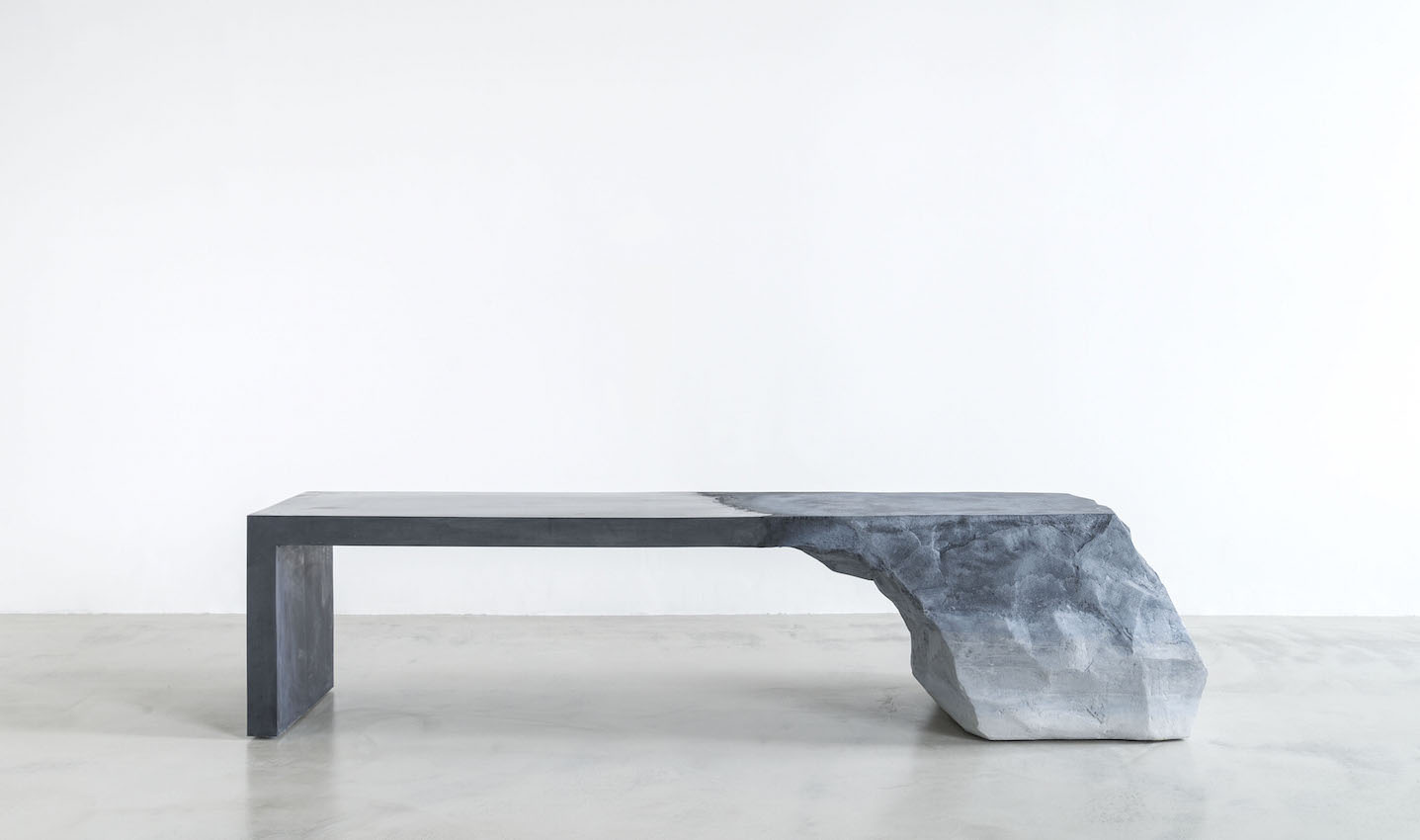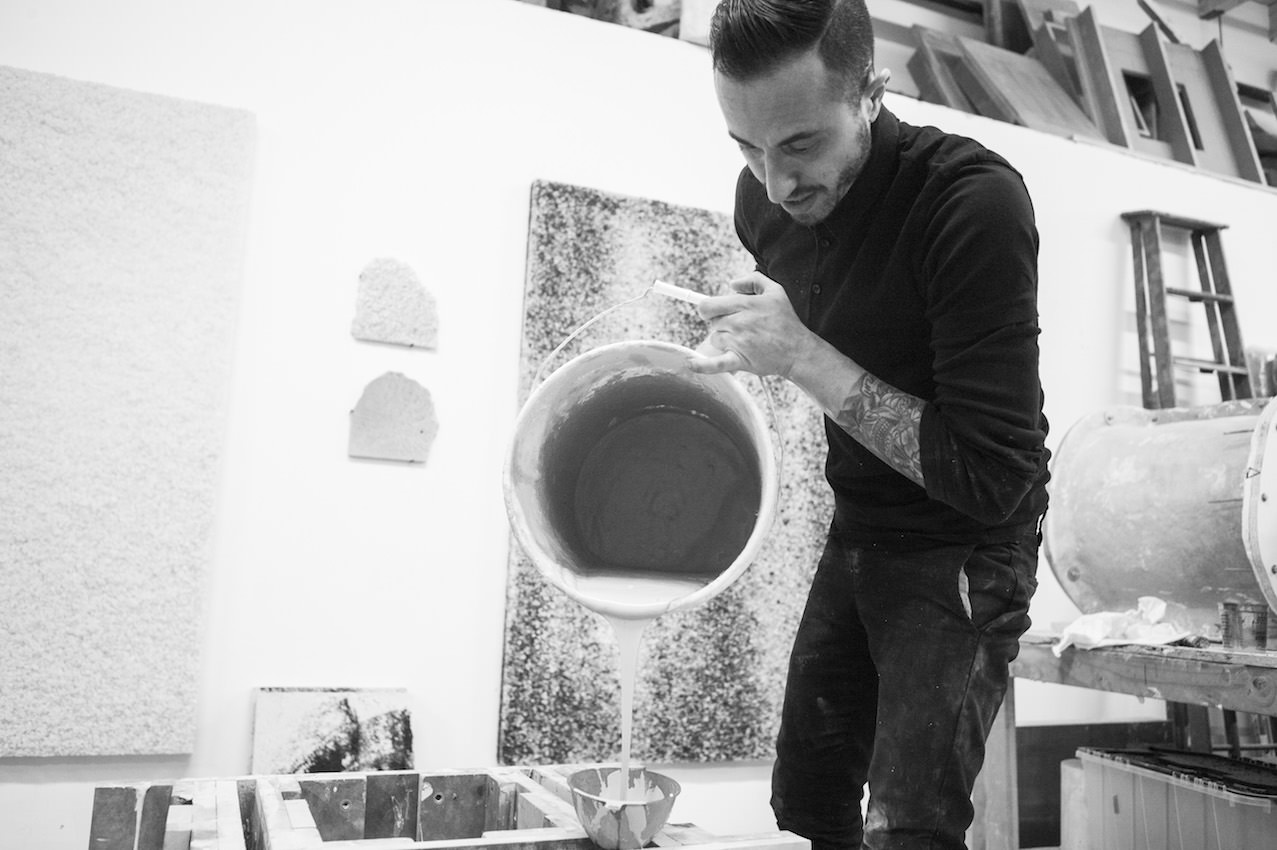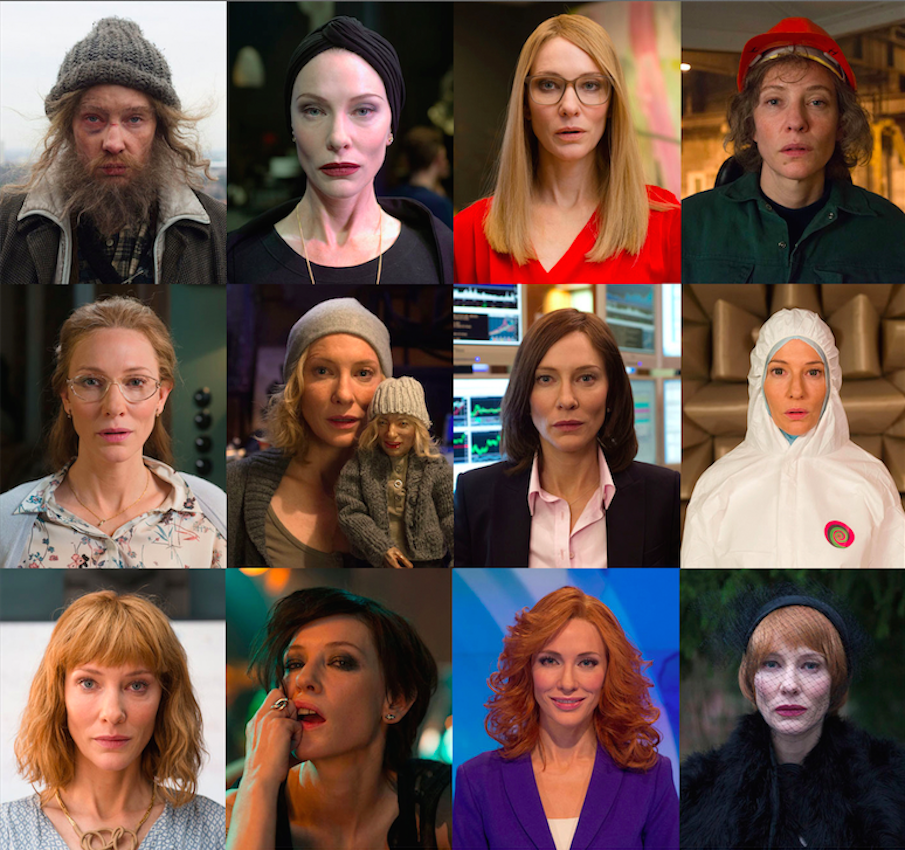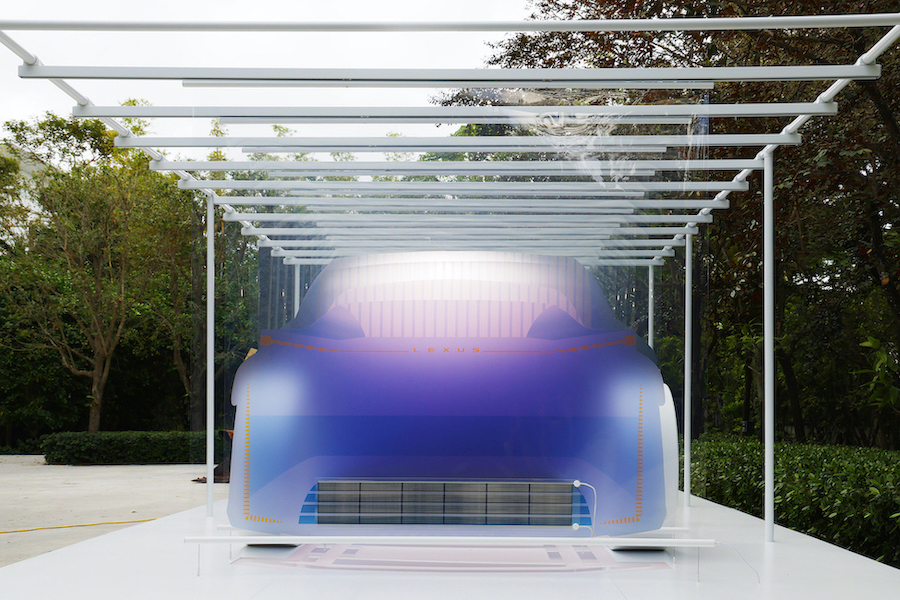Brooklyn-based artist Fernando Mastrangelo has a history of intertwining material and form, with past sculptural materials ranging from cocaine to human ashes. After a commission in 2013, he began designing furniture. Now running a design firm out of his studio, Mastrangelo has employed quartz, rock salt, and sprinkles in creating his own line of furniture. His current work endeavors to “inextricably entangle fine art and design disciplines.”
WHITEWALL: What was the starting point for your most recent series of functional art?

Courtesy of Fernando Mastrangelo.
FERNANDO MASTRANGELO: Drift, my most recent collection with FM/s, originated from a personal place. I’ve been making sculptures for over a decade, and when I began making furniture, I admittedly got swept away by this shiny new world. What I gave up, but didn’t realize, was my roots—sculpture. By sculpture I mean highly conceptual, well-made, beautiful objects that challenge people to rethink what they believe to already know. In 2015, I created many objects that “looked like furniture,” but this year I decided that I’m going to make sculptures that function as furniture, but are not limited to one or the other.
Another starting point was my experience standing in front of Perrito Moreno [the Argentine glacier], and staring at its overwhelming beauty and power. I felt compelled to create a series of work around the impact that that trip had on me, visually and artistically. I took the idea of glaciers breaking, melting, or regenerating as my conceptual framework.

Photo by Jacqueline Silverbush.
WW: Your past works have garnered a lot of attention for your link of subject and material. In your series “Nothing” from last spring, you noted the value of letting the material “speak for itself.” Can you tell us about the medium you chose to create this current series, MMATERIAL?
FM: When I started making furniture, it was all about the beauty, so when I chose the mediums, it wasn’t linked to the subject and material approach of my past work. This applies to both MMATERIAL and FM/s [and is] what Drift is all about. I’ve learned that no matter what I want to do to the materials I choose, they’re always their best when I barely change them. So I’ll always allow the materials to speak for themselves, no matter the subject.
WW: As you’ve moved toward creating benches, tables, chairs—has your creative process changed?
FM: It did change for a while. Initially I was focused on making beautiful objects, and realized that even if you’re moving towards creating benches, tables and chairs, they also need to be conceptually rigorous if they are going to pass the test of time. Drift will be a combination of these things.
WW: In your recent work, we’ve seen the emergence of basic shapes and forms. Could you describe how, in a particular project, a circle or triangle might speak to your particular idea?
FM: The circle has always functioned as a peaceful form that has an innate harmony. I love that symbol, that harmony in art. The triangle emerges from the three principles of a perfect work of art (which I personally use to examine a work, but am certain that not everyone will agree with). The principals are that (1) An object must have an idea attached to it; (2), The object must have a form that is conceptually tied to the idea; and (3), The form must be made with materials that bring the object to its fullest potential. In effect, these symbols appear, they are always attached to an idea, and they often simplify what may be a very complex thought.
WW: You’ve described your style as Minimalist. Would you say that your definition of minimalism has evolved from your experimentation with “getting to nothing” from your 2011 series, “Black Sculpture?”
FM: Your question is layered with so many years of personal narrative that I never thought anyone would pick up on. It was about five or six years ago that I finally understood Richard Serra. And when it hit me, I realized that I would forever do my best to be as reductive as possible. When I realized that Serra utilizes one sole material, and by just bending it, he revolutionized sculpture forever. I realized the profound genius that it takes to accomplish this simple, yet infinitely complex thing. I swore to myself that I would at least attempt to do something as pure.
I am drawn to very reductive objects and materials that are complex either in their ideas or on their surfaces. But the general forms have always been simple. I think of my practice as post-punk minimalism with a softer palette.
WW: In a past interview, you defined art as “love.” Yet, your works, with their colder, harder choices of material, defy the way many of us picture “love”—how would you say that they embody this ideal?
FM: The reason I said “love” was because art, sculpture, and furniture have all expanded my capacity as a person trying to figure things out. My work has shown me what fear, failure, success, love, revenge, jealousy, and everything in-between feels like. That to me equates to a love affair, in that it has shown me everything about the world. Art is like a person in my life, and it makes me the best and worst person at times.
WW: You’ve noted before that you don’t want to be “pigeonholed as the Hispanic artist dealing with social issues.” While you’ve distanced yourself from that, do you see yourself addressing any social issues in your work in the future?
FM: Funny you ask that, as I was recently having a conversation with my assistants after work and they were asking me why I didn’t make that kind of work anymore and if I had a few more ideas in the pipeline that I could return to. And you know what, I’d love to make a couple more shows down the road where I deal with social issues and take all the things I’ve learned from being on both sides and create something that is truly extraordinary.









